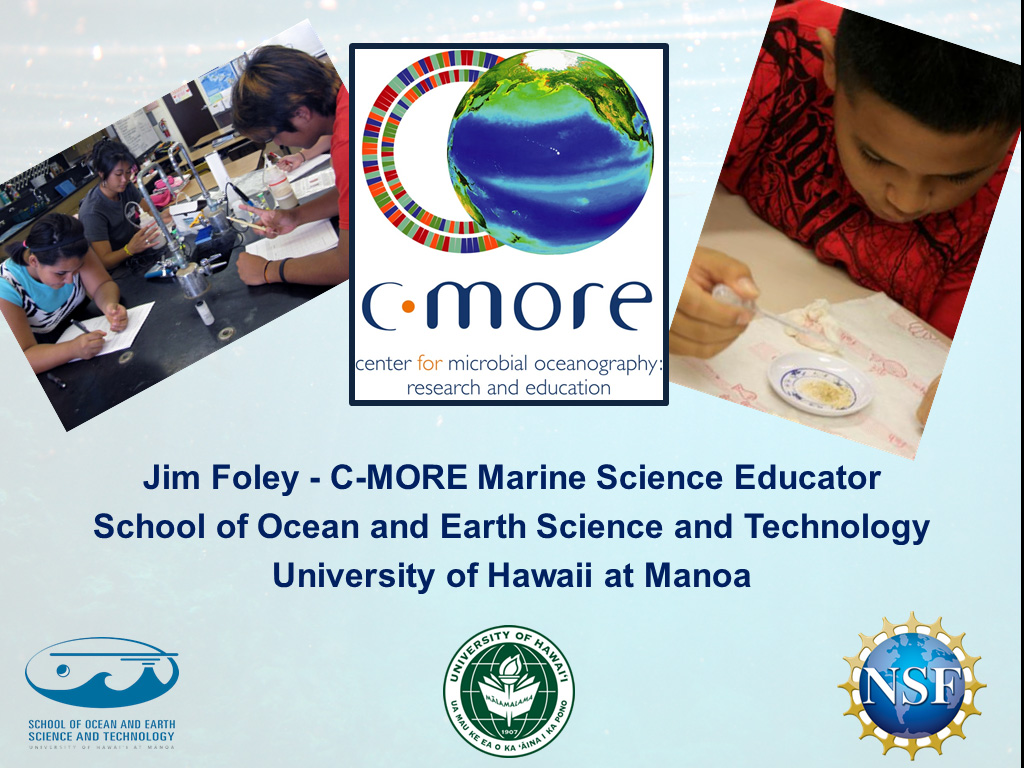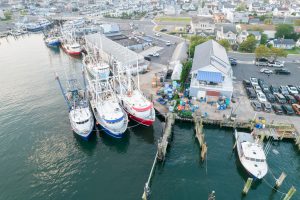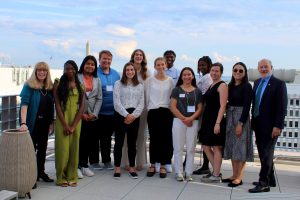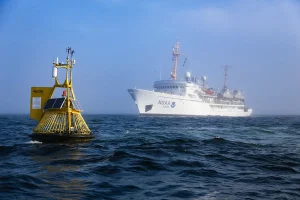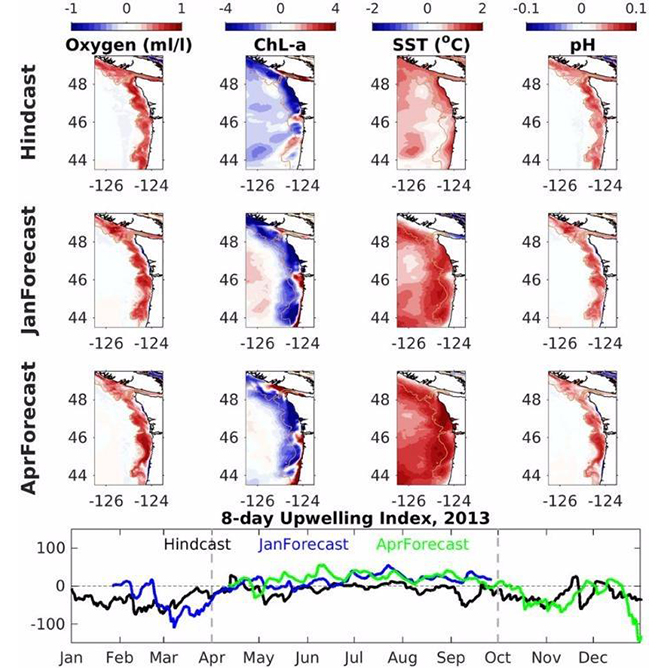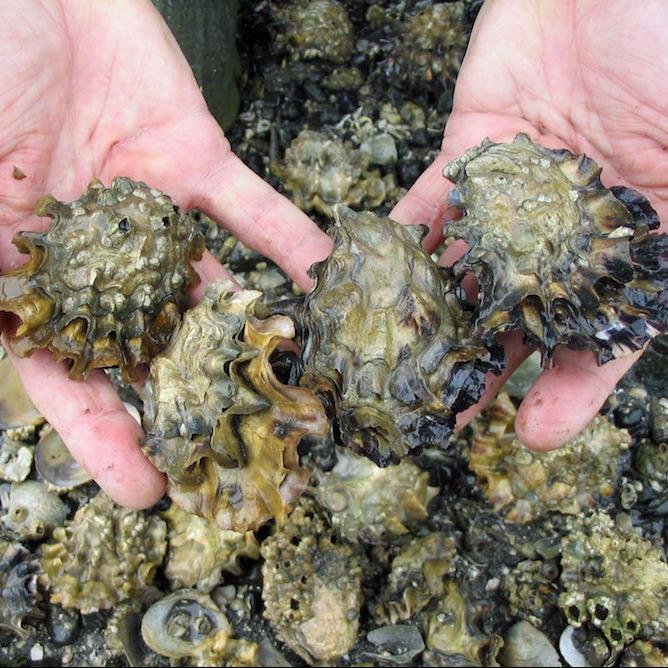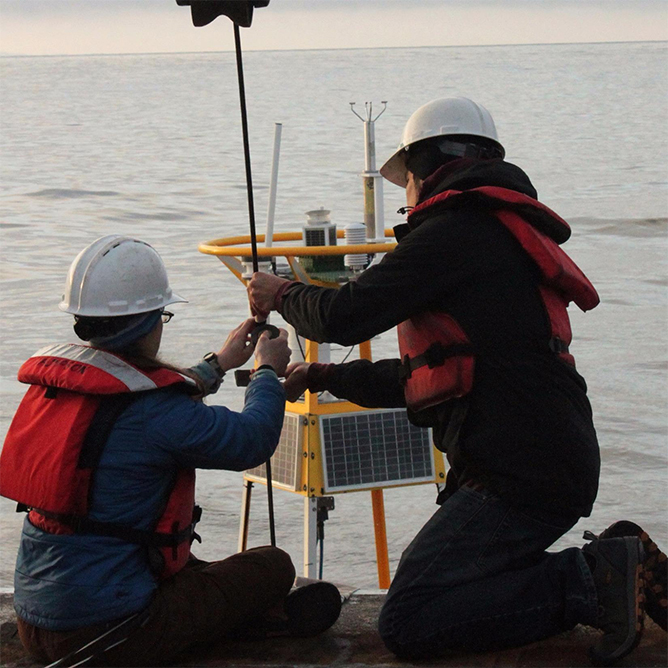SOARCE Webinar
Presenters: Scott Doney, Woods Hole Oceanographic Institute & Jim Foley, Center for Microbial Oceanography: Research & Education
Primary audience: Informal and formal educators, stakeholders
Date/time: Thursday April 30th, 2015, 4pm EDT
At 3400 m (11,155 ft) above the Pacific Ocean, on one of the most isolated mountains in the world, is an observatory that has been meticulously measuring our atmosphere for almost 60 years. Mauna Loa on the Island of Hawaii is more than 3700 km (2300 mi) away from the nearest major land mass, California, yet it is easily accessible. Mauna Loa was chosen by Dr. Charles David Keeling to make atmospheric carbon dioxide measurements because this location allowed access to air masses representative of the northern hemisphere. Since his measurements began in 1958, the concentration of atmospheric CO2 has been marching higher and higher at a rate that can only be attributed to the burning of fossil fuels.
Thirty years after Dr. Keeling began his time-series measurements that would come to be known as the Keeling Curve, another time-series began in Hawaii. This time the measurements were taken at a spot to represent the Pacific Ocean. Dubbed Station ALOHA, it is located 100 km (60 mi) north of Oahu where the depth is 4800 m (15758 ft). Since 1988, the Hawaii Ocean Time-Series (HOT) program has been making near monthly four-day research cruises to Station ALOHA to measure how the ocean is changing over time. One of the many measurements taken with the HOT program is the amount of carbon dioxide dissolved in seawater. While there is much more variability in seawater, carbon dioxide in the ocean is increasing at the same rate as in the atmosphere. Unlike other atmospheric gasses like oxygen and nitrogen, carbon dioxide reacts with water to form a weak acid that is changing the chemistry of the ocean. While the carbon dioxide of the ocean has increased, the pH of the ocean has decreased, becoming more acidic.
An acidifying ocean will have substantial impacts on the marine life that depends on stable ocean chemistry for survival. Organisms such as corals, oysters, and snails that build body structures out of calcium carbonate will have a particularly tough time with ocean acidification. Ocean acidification has already had economic impacts for several communities, and even greater impacts may be felt in the future. During this webinar, we will present some of the dangers posed by ocean acidification as well as demonstrations that can be done to discuss the impacts and chemistry of ocean acidification.
About the Speaker:
Scott Doney is a Senior Scientist and Chair of the Department of Marine Chemistry and Geochemistry at the Woods Hole Oceanographic Institution (WHOI). He graduated with a PhD from the Massachusetts Institute of Technology/Woods Hole Oceanographic Institution Joint Program in Oceanography in 1991 and was a postdoctoral fellow and later a scientist at the National Center for Atmospheric Research, before returning to Woods Hole in 2002. His science interests span oceanography, climate and biogeochemistry. Much of his research focuses on how the global carbon cycle and ocean ecology respond to natural and human-driven climate change, which may act to either damp or accelerate climate trends. A current focus is on ocean acidification due to the invasion into the ocean of carbon dioxide and other chemicals from fossil fuel burning.
Jim Foley is a marine science educator with the Center for Microbial Oceanography: Research and Education (C-MORE) at the University of Hawaii where he manages the K-12 outreach programs. Jim has extensive offshore research experience in the North Atlantic, Caribbean, and Central Pacific as a Senior Assistant Scientist with Sea Education Association (SEA) of Woods Hole, MA. In that role, he helped undergraduates and high schools students get hands-on experience in biological, geological, chemical, and physical oceanographic sampling. Jim cultivated a passion for education that was reinforced as a National Science Foundation GK-12 fellow developing inquiry based lessons for middle schools teachers and students during his first year of graduate school. Jim completed his undergraduate work at Miami University and holds a M.S. from Clemson University.
</ br>
